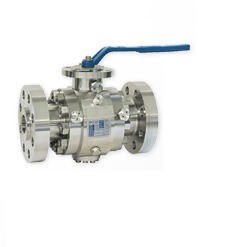- Contact Us
- Call Us
- Menu

A ball valve is generally a well-understood industrial valve design. Its simple quarter-turn operation, bidirectional sealing, compact form factor, and tight shutoff capability make the ball valve a preferred choice for many applications. The many variants of industrial ball valves can be grouped into two categories, distinguished by a primary design feature, the mounting of the ball.
The two designs are known as floating ball and trunnion mounted ball. Floating ball valves use the seats and body to hold the ball in place within the fluid flow path, with the force of directional flow pushing the ball against the downstream seats. The floating nature of the ball limits the applicability of this design to smaller valve sizes and pressure ranges. At some point, the fluid pressure exerted on the ball surface can exceed the ability of the seats to hold the trim effectively in place.
Trunnion mount ball valves employ the stem shaft and, you guessed it, a trunnion to support the trim. The shaft and trunnion, connected to the top and bottom of the trim, establish a vertical axis of rotation for the ball and prevent it from shifting in response to flow pressure. A trunnion is a pin that protrudes from the bottom side of the ball. It sits within a bearing shape, generally cylindrical, at the base of the body.
Because of their structural design, trunnion mount ball valves are suitable for all pressure ranges and sizes. They are used by many manufacturers as a basis of design for their severe service ball valve offerings. A trunnion mount ball valve can also be advantageous for applications employing valve automation. Since the ball is not held in place by a tight-fitting seal arrangement, operating torque tends to be lower for comparably sized trunnion mount valves, when compared to floating ball valves.
Whatever your valve application challenge, share it with an industrial valve expert. The combination of your process expertise and experience with your product application knowledge will yield an effective solution.